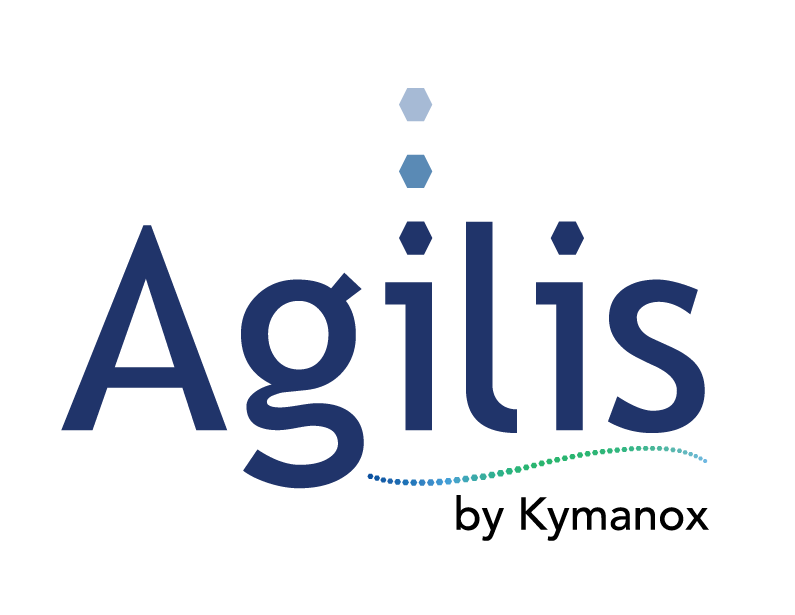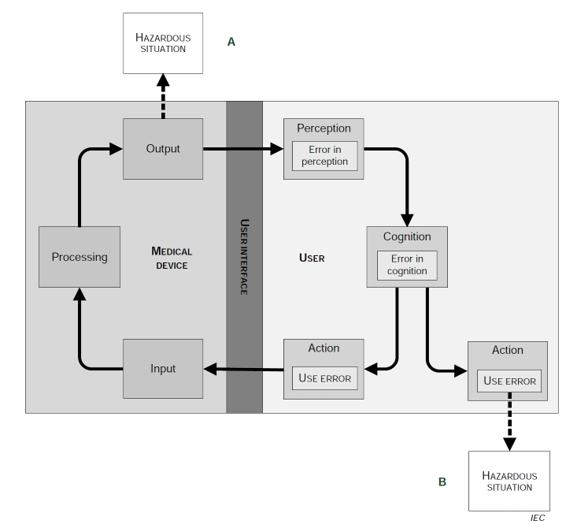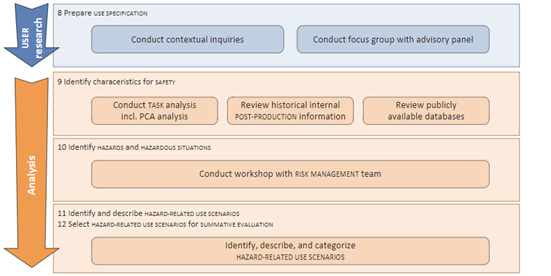How to Conduct a Task Analysis
Mitigating Risk Starts With Assessing Risk:
How to Write a Task Analysis
A Fundamental Element of Your Human Factors Approach
What is a Task Analysis?
One critical aspect of a successful human factors approach to your medical device is understanding and analyzing user interactions with your device. A task analysis is an important tool for defining tasks required to successfully use a device to further understand user interactions. The task analysis is used to produce detailed descriptions of manual and intellectual activities of personnel who are operating, maintaining, or controlling devices or systems [1]. This analysis aids manufacturers in studying interactions between a user and their medical device to achieve a desired result by breaking down the device use process into discrete sequences of tasks [2,3].
By breaking down the use of the device into specific tasks, this analysis helps uncover the user-device interactions that may result in potential use errors. Completing a task analysis early in the design and development process provides opportunities to address these possible use errors through risk control strategies developed using the use-related risk analysis (URRA) to ensure safe and effective use. This proactive approach to addressing possible use-related issues allows for manufacturers to become better prepared for downstream validations and ultimate use of the product on the market.
How to create a Task Analysis
Creating a task analysis begins with understanding the various use cases of the device used to inform the breakdown of sequential and simultaneous tasks required for successful use. From there, a high-level set of user-device interaction functions is created to provide a framework for associated tasks. After the high-level interactions have been defined, a task list is created for the user interactions required to complete the functional element, with sub-tasks defined for discrete steps to be taken by the user.
For example:
High Level Function – Test Blood Sample
Task – Input sample into machine
Sub-Tasks
Place sample into test rack
Place test rack into loading bay
Press “enter” on screen
Once the manufacturer has generated a complete list of steps required to perform each task, further analysis techniques can be applied to evaluate how well users are able to perform the steps (such as the PCA model noted below).
Using the PCA Model for your Task Analysis
The Perception, Cognition, and manual Action (PCA) model may be used to further break down user interactions into specific user actions related to perceptual inputs, cognitive processing, and physical actions involved in performing the related step. [3].
Using the PCA model, tasks are decomposed down to the level of individual user interactions related to:
1) Perception – Perceptual information to be noticed or detected by the user.
2) Cognition – Cognitive components to be interpreted by the user.
3) Action – Physical actions taken by the user.
Figure 1: Model of User-Device interaction – per AAMI/IEC TIR62366-2 [2]
Using the PCA model assists manufacturers in understanding the different PCA elements required for each task and further delineate use errors that may occur if the user if unable to meet these requirements. Additional steps or tasks may be revealed or uncovered that manufacturers were previously unaware of or may have glanced over in the initial task list.
Potential use-related problems can be identified by asking the following questions [2]:
1) What if the user is unable to perceive x?
2) What if the user is unable to interpret/process y?
3) What if the user is unable to perform action z?
Although use errors are ultimately bound to an action (or inaction), analysis of perceptual information and cognitive elements may inform the cause of use errors that may occur. This breakdown of use errors then allow manufacturers to further inform their use-related risk analysis (URRA).
It is critical when developing your task analysis to provide sufficient detail related to the task list and user-device interactions using the PCA model. Not applying sufficient detail may result in broad inputs into the URRA, which can result in inadequate risk mitigations implemented in the user interface (UI). Thoroughly outlining the relevant tasks/sub-tasks and using the PCA model to further uncover user-device interactions allows for a better understanding of the UI and a more effective UI design the first time.
When to create a Task Analysis
With all of the required elements needed for successful product design and implementation, it can be difficult to map out all of the efforts needed for successful product development. For use-related design considerations for a product, an effective task analysis begins with understanding that it is a foundational element that will later inform downstream efforts. A task analysis is not a documentation exercise! Rather, it is a methodology that provides inputs to your use-related risk analysis (URRA) and subsequent assessments. An effective task analysis helps manufacturers identify potential use errors and further analyze and mitigate these use errors through their URRA process early and effectively.
Conducting your task analysis is recommended early in the development process (following initial user research) [2]. This is because the task analysis ultimately helps define your URRA, which then defines your UI (product design, instructional material, etc), UI evaluation elements, final validation testing for your product, and assessment of residual risks related to usability. An effective task analysis early in the process sets manufacturers up for successful human factors validations and helps ensure effective risk mitigations designed into the product UI.
Figure 2: When to create your task analysis – per AAMI/IEC TIR62366-2 [2]
Manufacturers should make sure that their initial task analysis has been thoroughly completed prior to completing their URRA. The URRA should capture and assess the potential use errors defined by the task analysis. Similar to the URRA, the task analysis can also be considered a living document. Iterative changes to task-related elements of the product or defined product use interactions during the development phase should be captured in an updated task analysis to ensure continuity across other design control elements.
Bringing it all together
The task analysis is both a critical and foundational element for your human factors approach and use-related development process. Prioritizing and completing a thorough task analysis is advantageous to further outlining the user interface and associated risks.
Agilis works with clients at many different stages of product development, including creating thorough task analyses that support effective UI risk mitigations for potential use errors. We are proud to help provide important foundational elements to support your goals and ensure safe and effective products on the market!
References:
[1] ANSI/AAMI HE75. (2009). Human factors engineering - Design of medical devices.
[2] AAMI/IEC TIR62366-2: 2016 Medical devices – Part 2: Guidance on the application of usability engineering to medical devices.
[3] FDA guidance entitled, Applying Human Factors and Usability Engineering to Medical Devices that was published by CDRH, FDA on February 3, 2016.
About the Author:
Clayton Smith, M.Eng
Clayton’s background includes both engineering and quality roles at pharmaceutical/ medical device manufacturers with specific experience in Nonconformance/CAPA, Process Validation, Design Controls, and Risk Management. Clayton holds a Bachelor of Science and a Master of Engineering in Biomedical Engineering from Texas A&M University.




